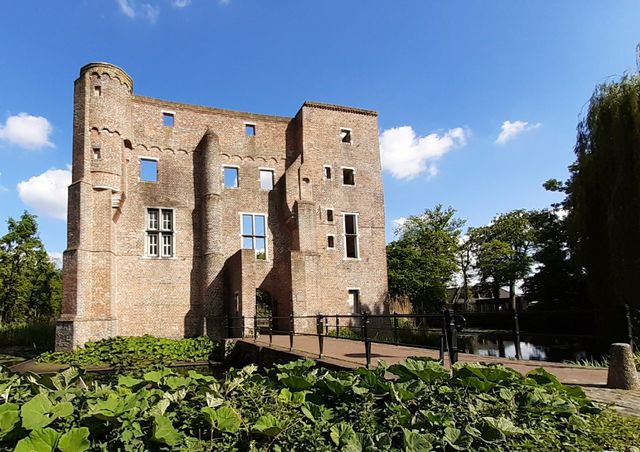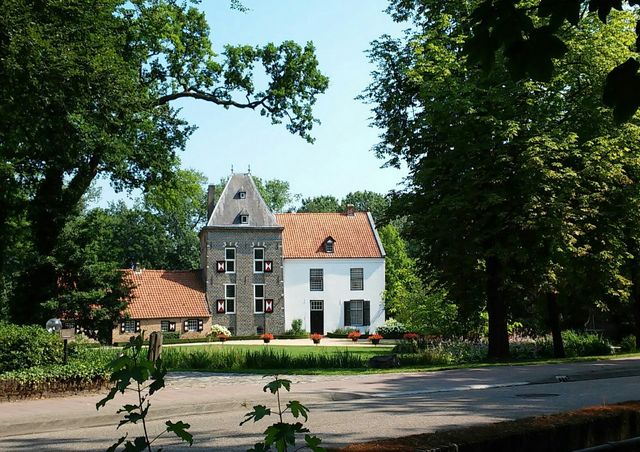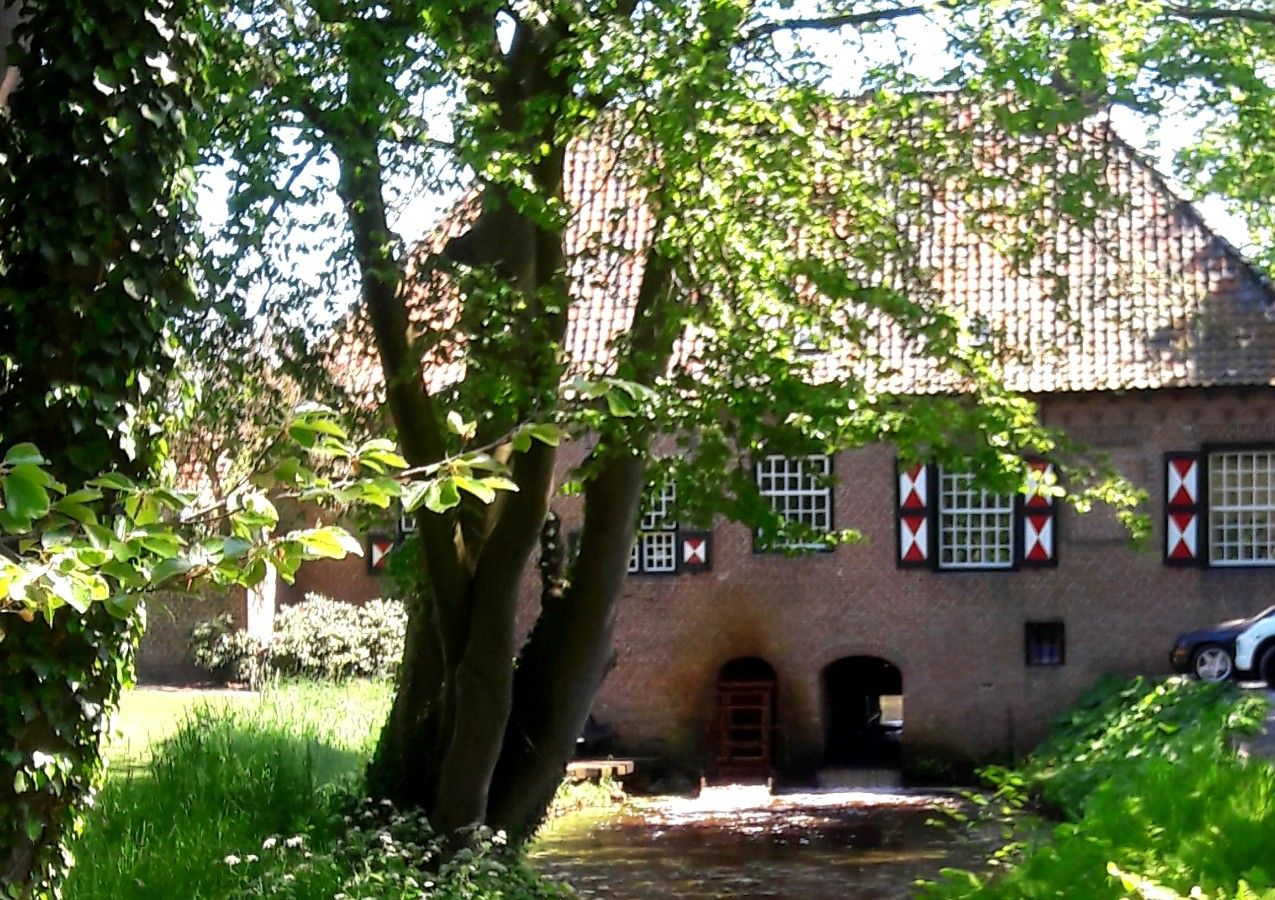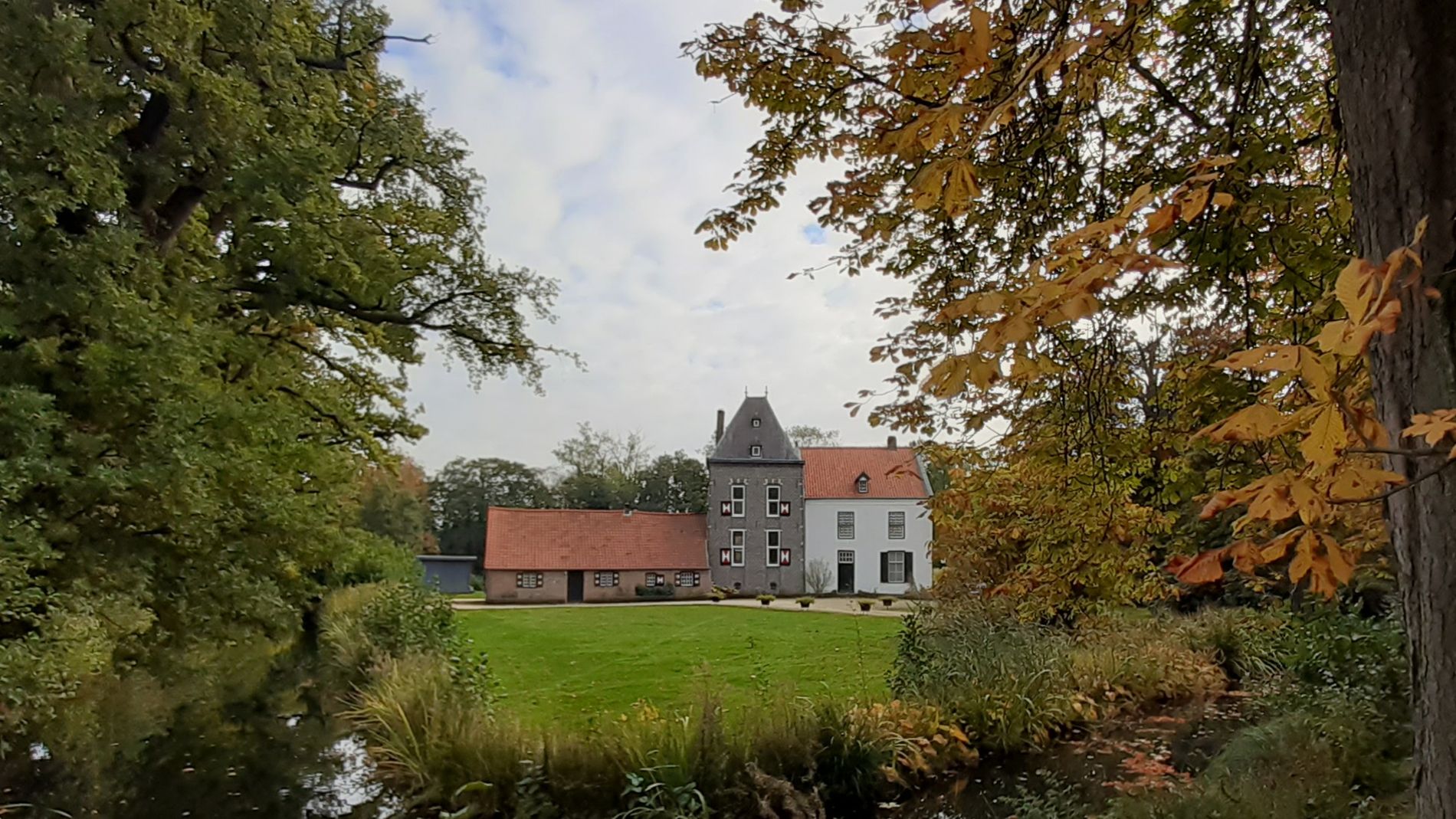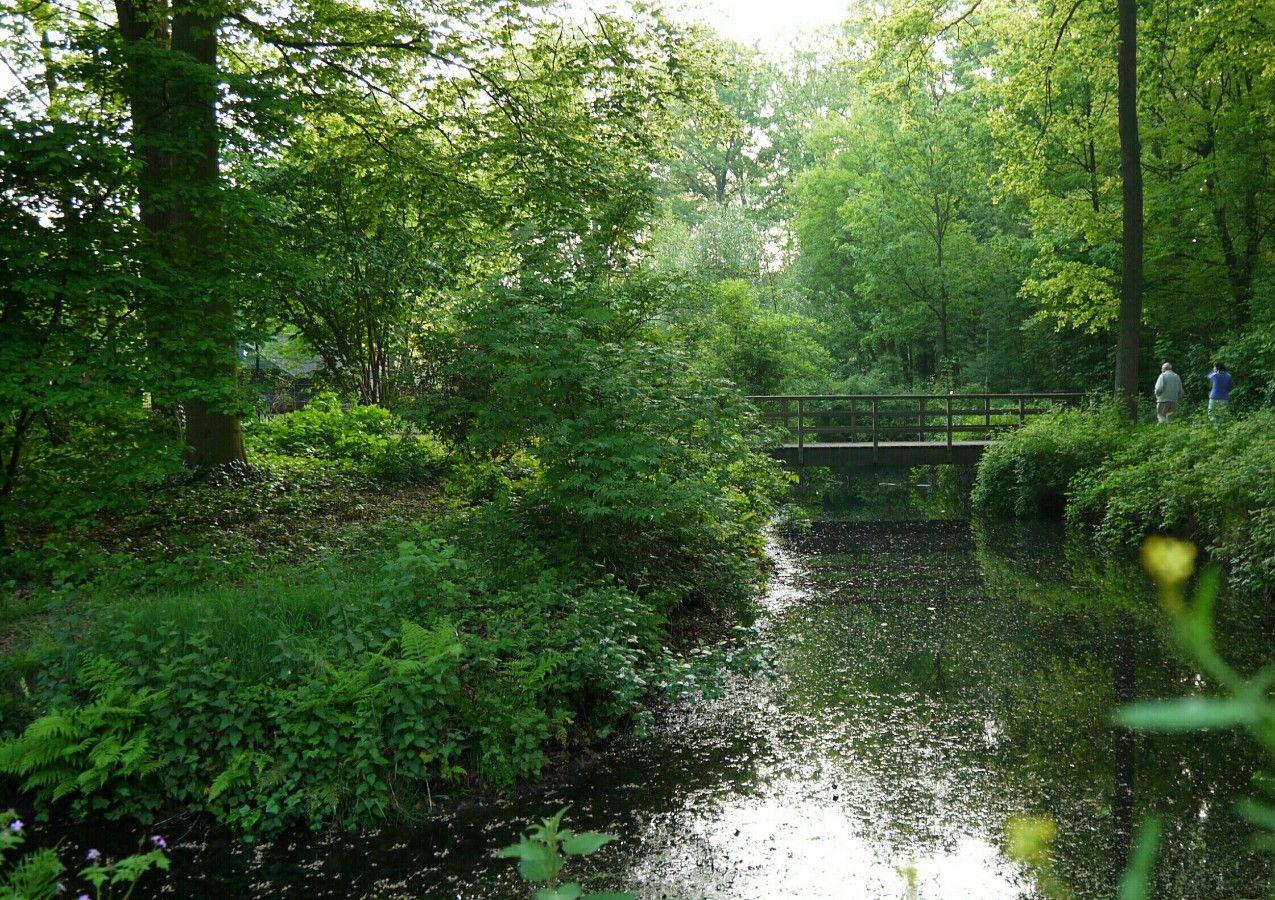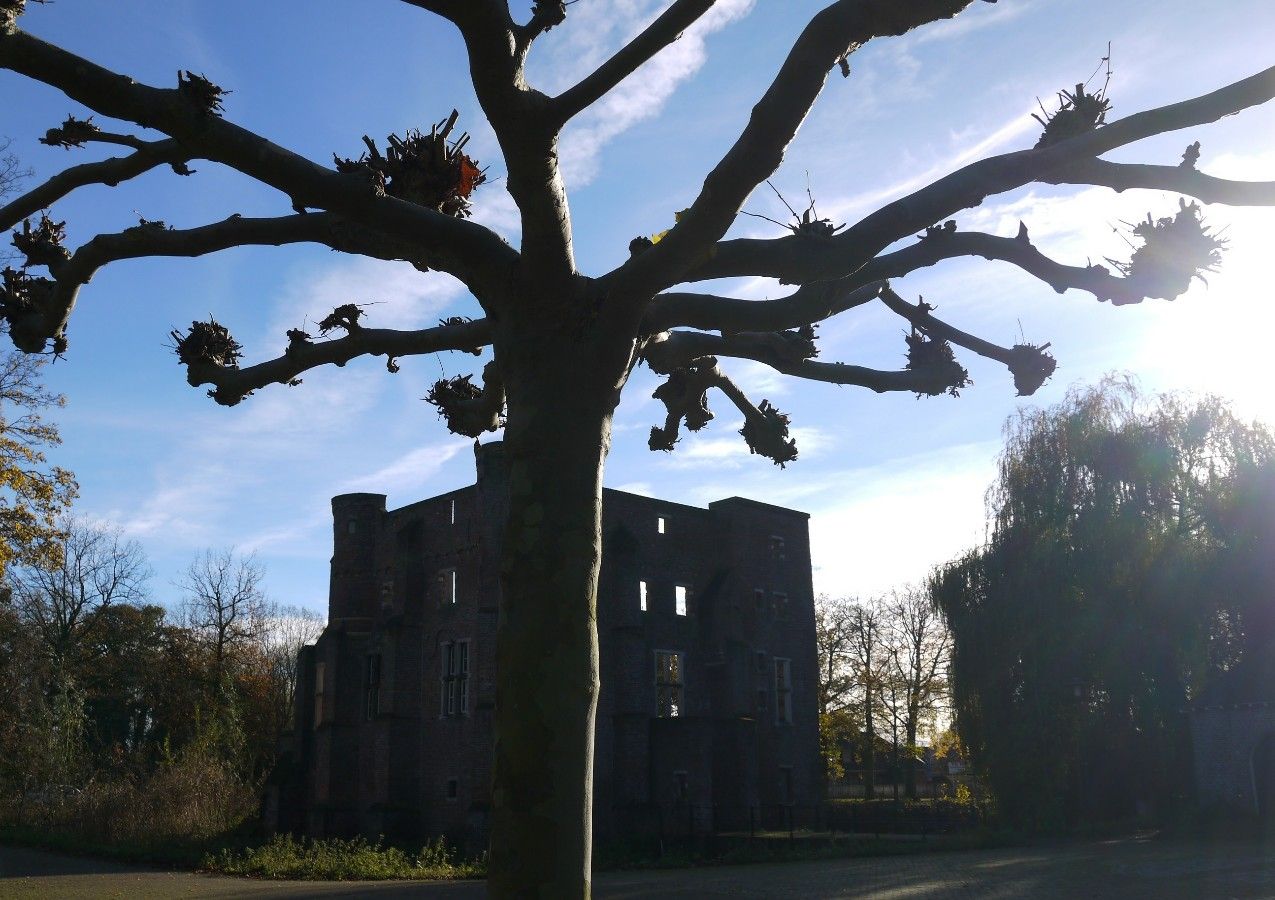Haageind castle grounds
Two castles with outbuildings, gardens and parks; near the Great Castle animal meadow and park in English style
Show all 11 photos
Two castles with outbuildings, gardens and parks; near the Great Castle animal meadow and park in English style
Great Castle (before 1397)
The castle from before 1397 is like a square, Gothic building, with some Renaissance influences, founded by a descendant of the Van Doerne family, a distant cousin of Mr. van Deurne. From the 16th century, the lords of Deurne lived here, and it became the 'residence'. The castle was renovated twice in the 17th and 18th centuries. During the restoration in 1906-08, blind walls from the 18th century were demolished. The castle then looked as it did in the middle of the 17th century. During the liberation of Deurne in 1944, the castle was largely destroyed by shelling and fire, after which the ruin was reinforced in 1952.
Dinghuis (16th century, with older predecessors)
This 'neerhuijs', extension of the …
Two castles with outbuildings, gardens and parks; near the Great Castle animal meadow and park in English style
Great Castle (before 1397)
The castle from before 1397 is like a square, Gothic building, with some Renaissance influences, founded by a descendant of the Van Doerne family, a distant cousin of Mr. van Deurne. From the 16th century, the lords of Deurne lived here, and it became the 'residence'. The castle was renovated twice in the 17th and 18th centuries. During the restoration in 1906-08, blind walls from the 18th century were demolished. The castle then looked as it did in the middle of the 17th century. During the liberation of Deurne in 1944, the castle was largely destroyed by shelling and fire, after which the ruin was reinforced in 1952.
Dinghuis (16th century, with older predecessors)
This 'neerhuijs', extension of the Groot Kasteel, was originally a farm near the castle. Until the French era (1795) it served as a court house and meeting place for the dingbank. The current name 'Dinghuis' (lawsuit) is derived from this. The dingbank - seven aldermen and the drossaard (drost) - ruled until the beginning of the 19th century. Sentences were passed under the lime tree in front of the property. The 'prison' was located in a cellar of the castle. During the restoration in 1965, the 16th-century wooden frame of the previous lower house was discovered, which was constructed as a half-timbered building.
Small Castle (before 1383)
Het Klein Kasteel was built as a successor to an older castle on Kerkeindseweg. It was the residence of the lords of Deurne from the Van Doerne family, and was also called the 'Hoff van Doirne'. This 'Oude Huijs' initially consisted of a square residential tower that was built in the 14th century. In the 16th century it was in a bad condition, and from then on the Lord of Deurne chose the acquired Groot Kasteel as his residence. In the 18th century a stable building was added. In 1857 the old house (the old farm) was demolished and an extension of the tower was converted into the current house with a saddle roof. In the 18th century, the Klein Kasteel was briefly in the hands of local wealthy people, and then served as a luxury rental home. In the twenties the painter Otto van Rees lived here and later artist Pieter Wiegersma.
Watermill
This watermill over the Vlier has wall anchors that suggest that the building dates from 1631, but in its current form the building dates from 1690. The watermill was built in 1631 on the site of a much older predecessor. The predecessor was built here around 1370 to replace a water mill on Kerkeindseweg. The mill was decommissioned in 1816, because a standard mill had been built in the village. The national monument was restored in 1980 and a new water wheel was installed in the lock in 1994.
Castle farm (1804)
This so-called halle house or short gable farmhouse has year anchors with the year of a renovation (1804). The house had been in the hands of the lord of Deurne since 1694 and was renovated by order of the lord of the castle. Shortly after 1900 the house was split into two houses and used as a residence for castle staff. The business area was restored in 1973. The original thatched roof with a 'base' of tiles was replaced by a tiled roof for fire safety reasons.
This is how to reach Haageind castle grounds
Haageind 37
5751 BB Deurne Plan your route
Starting point: from your location
Opening times
- Every monday open
- Every tuesday open
- Every wednesday open
- Every thursday open
- Every friday open
- Every saturday open
- Every sunday open
- The monuments are only of the outside tour

